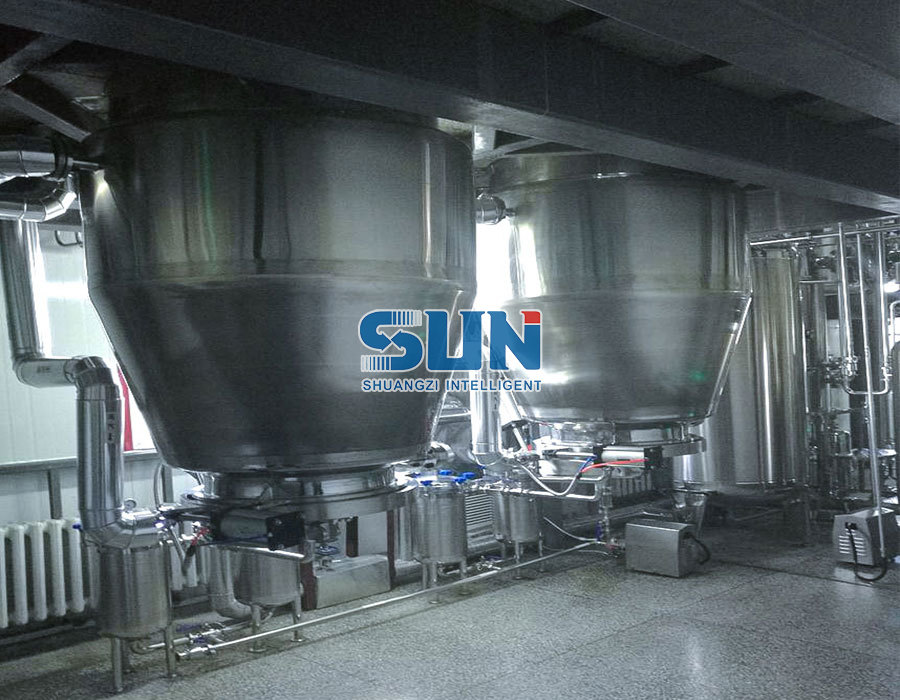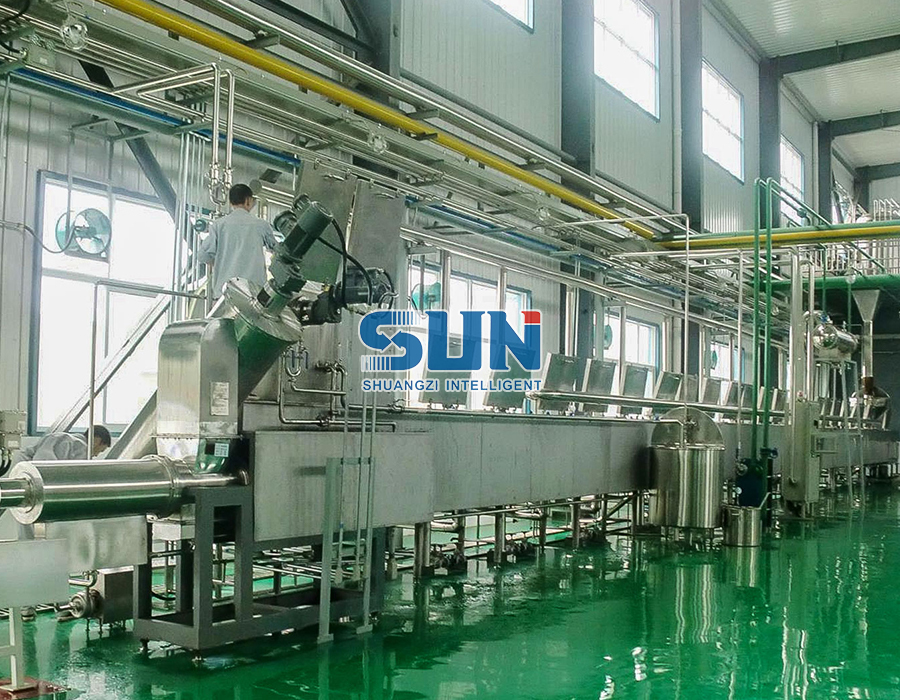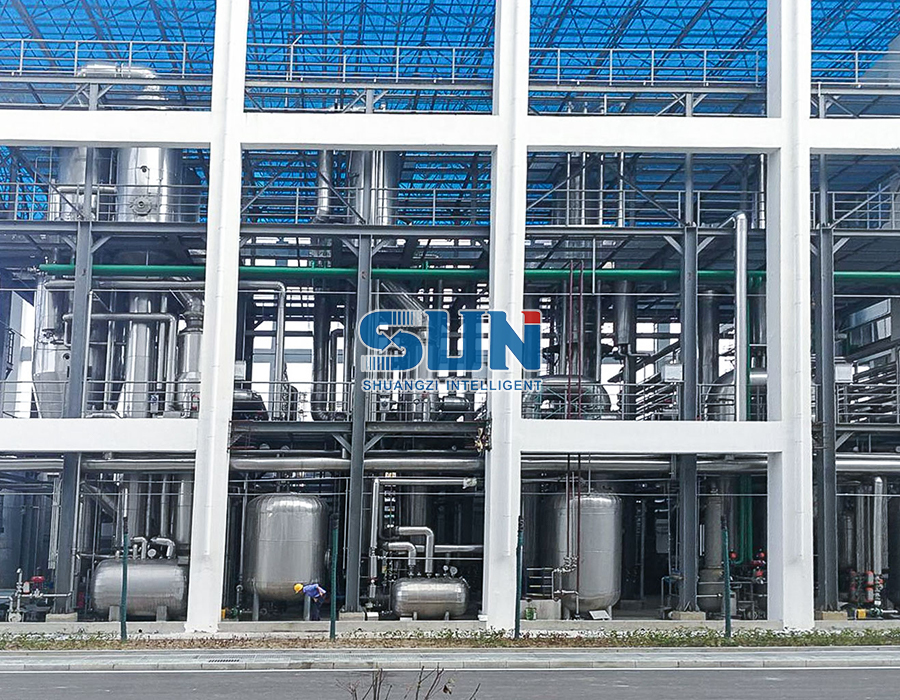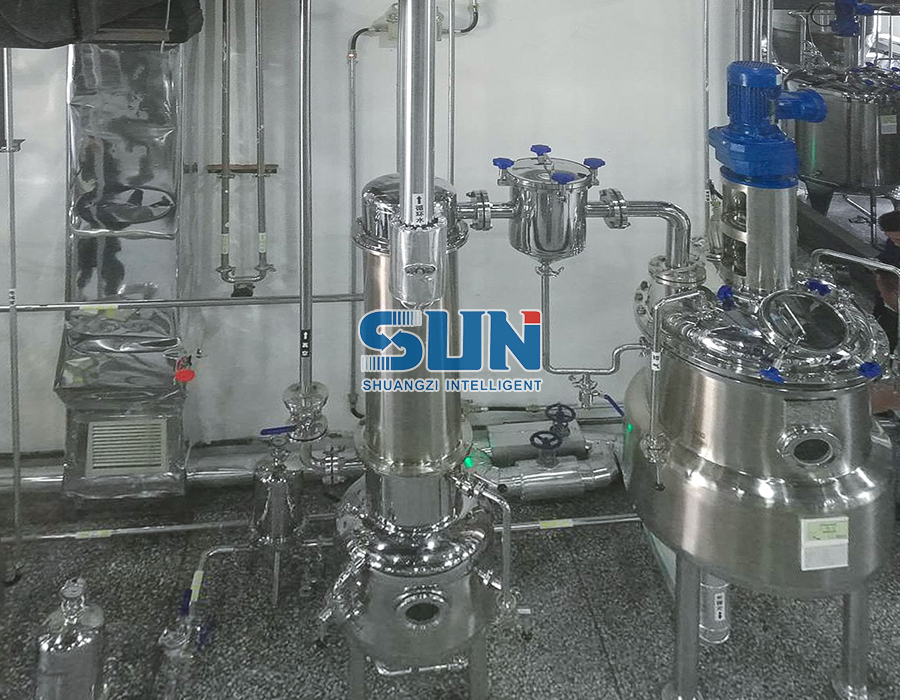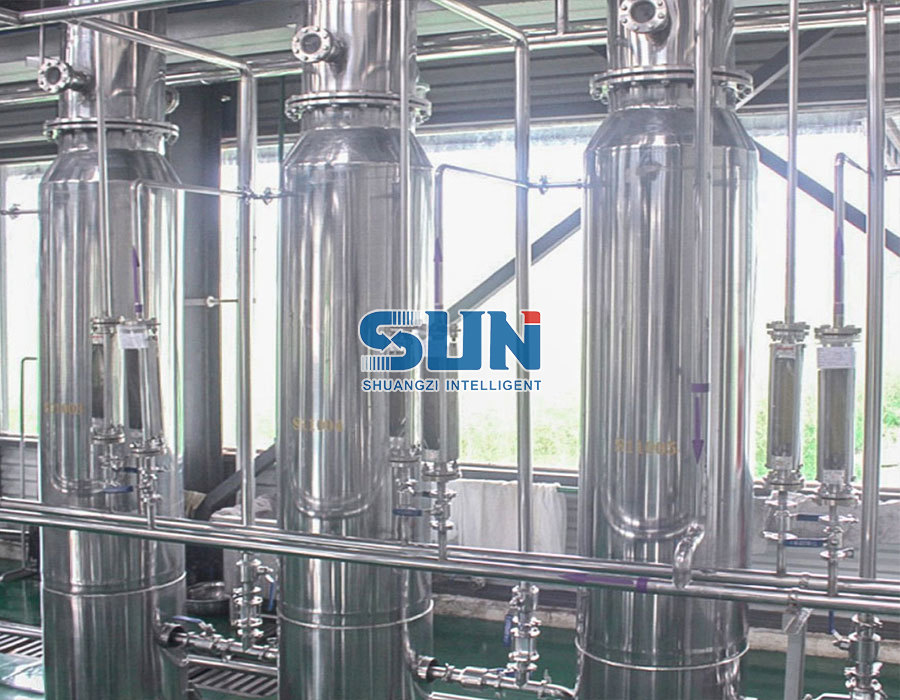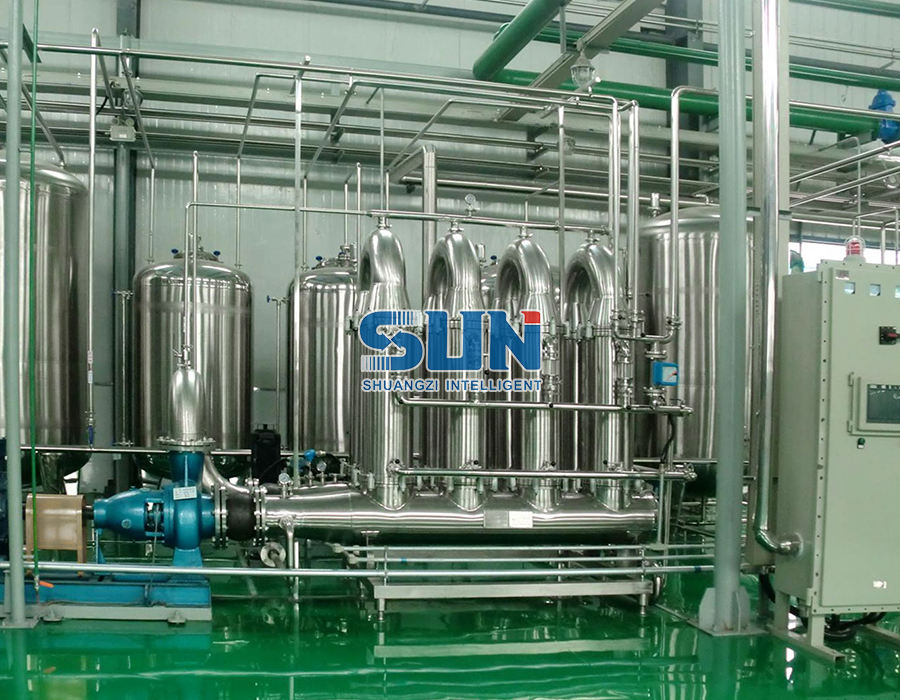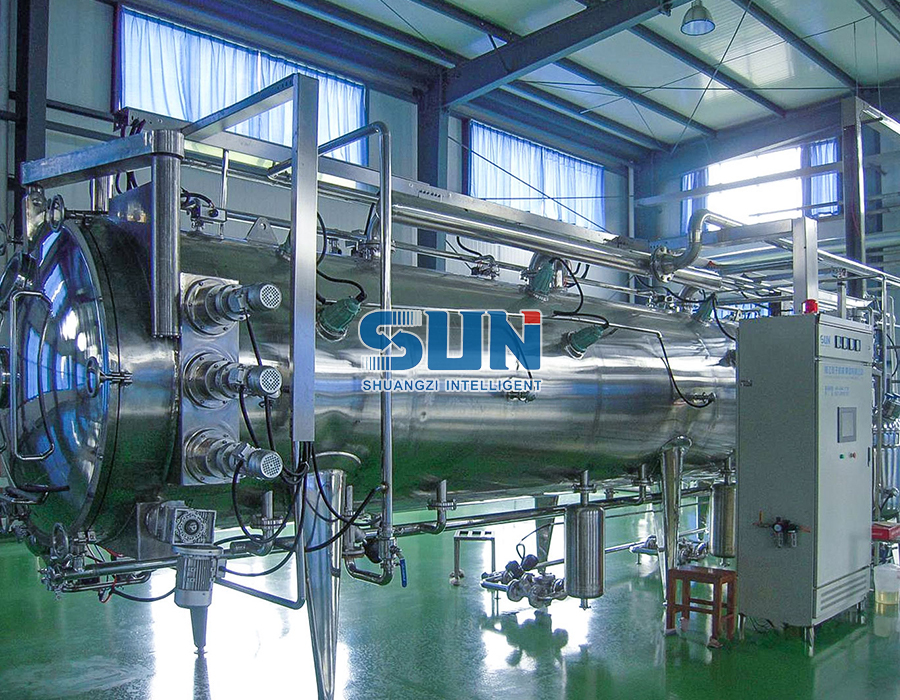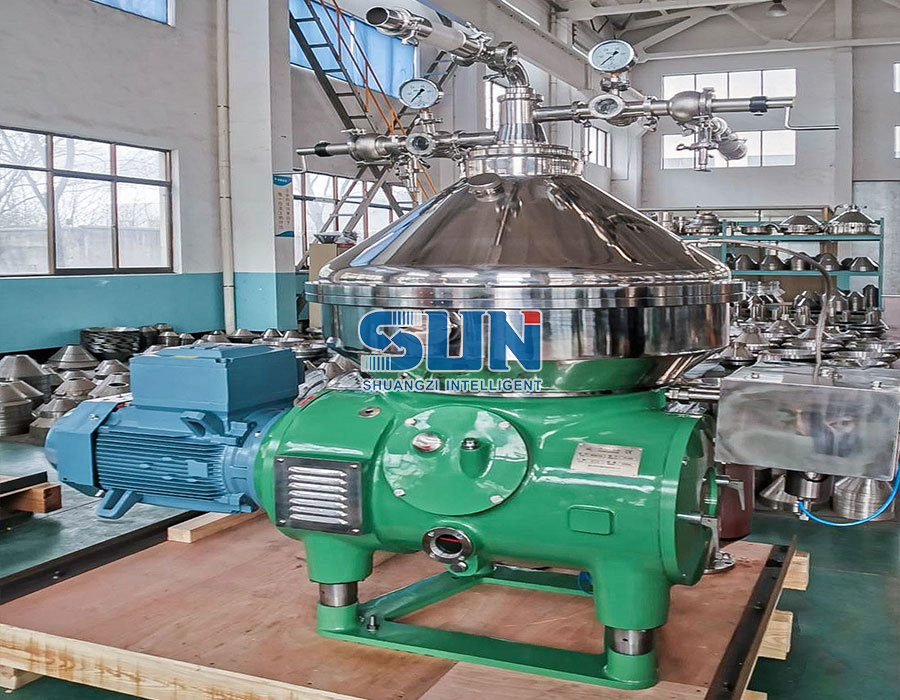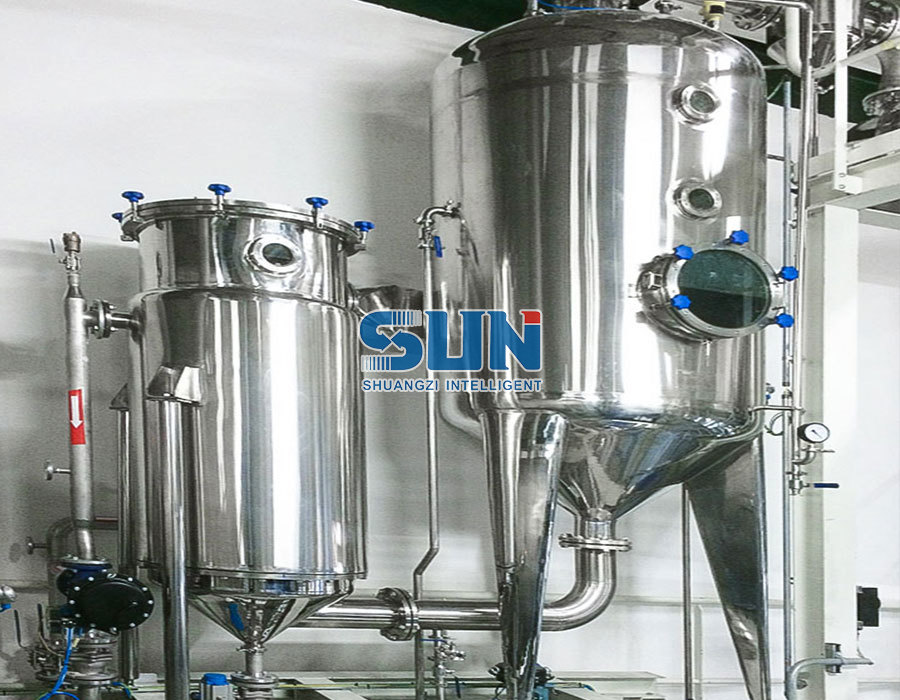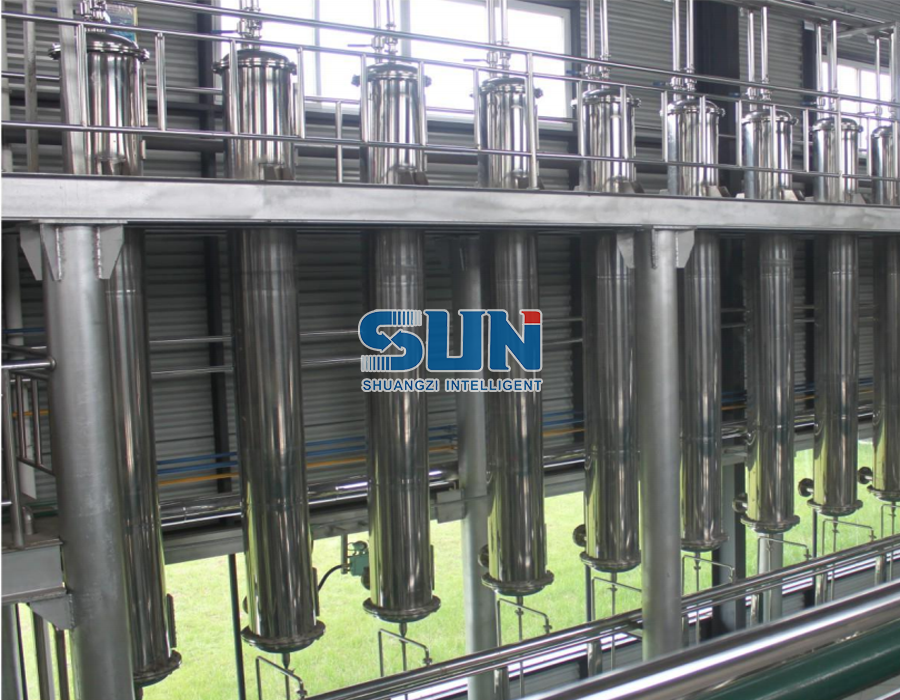Efficient heat transfer is a critical factor in the performance and operation of a fall film evaporator, and it has several significant impacts on the evaporator's effectiveness and efficiency. Here's how efficient heat transfer affects a falling film evaporator:
Enhanced Evaporation Rate: Efficient heat transfer ensures that heat is quickly and effectively transferred from the heating surface (typically tubes or plates) to the falling liquid film. This rapid heat transfer leads to an increased evaporation rate, allowing the evaporator to process larger volumes of liquid in a shorter amount of time. This is especially important in industrial processes where high throughput is required.
Reduced Residence Time: Because efficient heat transfer leads to faster evaporation, the liquid film spends less time on the heated surface. This reduced residence time is beneficial for heat-sensitive materials, as it minimizes their exposure to elevated temperatures. It also contributes to the prevention of thermal degradation or fouling of the liquid.
Improved Energy Efficiency: Efficient heat transfer means that less energy is required to achieve the desired level of evaporation. This can result in energy savings and reduced operating costs for the falling film evaporator, making it a cost-effective choice for many industrial applications.
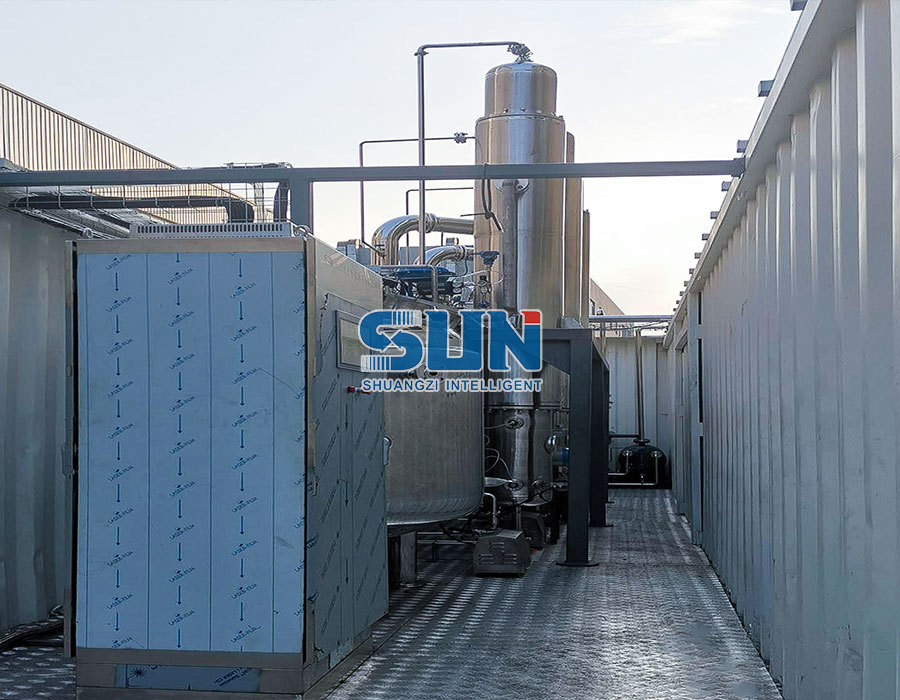

Consistent Product Quality: When heat is transferred efficiently and uniformly, the evaporation process is more consistent. This leads to a uniform concentration of the product, which is vital for maintaining product quality and consistency in industries such as food processing and pharmaceuticals.
Prevention of Scaling and Fouling: Efficient heat transfer helps prevent the buildup of scale and fouling on the heating surface. Rapid heat transfer discourages the deposition of solids or impurities from the liquid onto the heated tubes or plates, reducing the need for frequent cleaning and maintenance.
Enhanced Control: Precise control of temperature and heat transfer rates is easier to achieve when heat transfer is efficient. This allows operators to maintain the desired product characteristics and concentration levels accurately.
Reduced Operating Costs: By operating at higher efficiency, a falling film evaporator can potentially reduce overall operating costs, including energy consumption and maintenance expenses. This cost savings can make the evaporator more economically attractive for businesses.
Optimized Equipment Design: Efficient heat transfer influences the design of the falling film evaporator. Design considerations such as the geometry and materials of the heating surface, as well as the configuration of the evaporator, are tailored to maximize heat transfer efficiency.
Efficient heat transfer is fundamental to the performance of a falling film evaporator. It impacts the evaporation rate, residence time, energy efficiency, product quality, maintenance requirements, and overall cost-effectiveness of the system. Proper design, operation, and maintenance of the evaporator to ensure efficient heat transfer are essential for achieving the desired results in various industrial applications.


 英语
英语 俄语
俄语